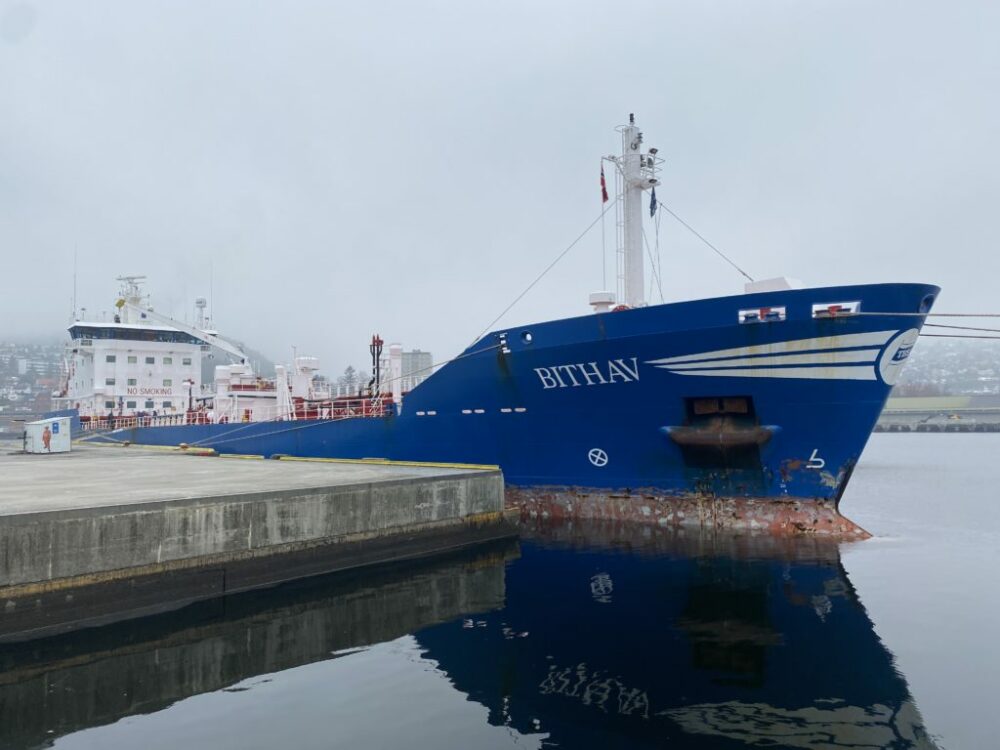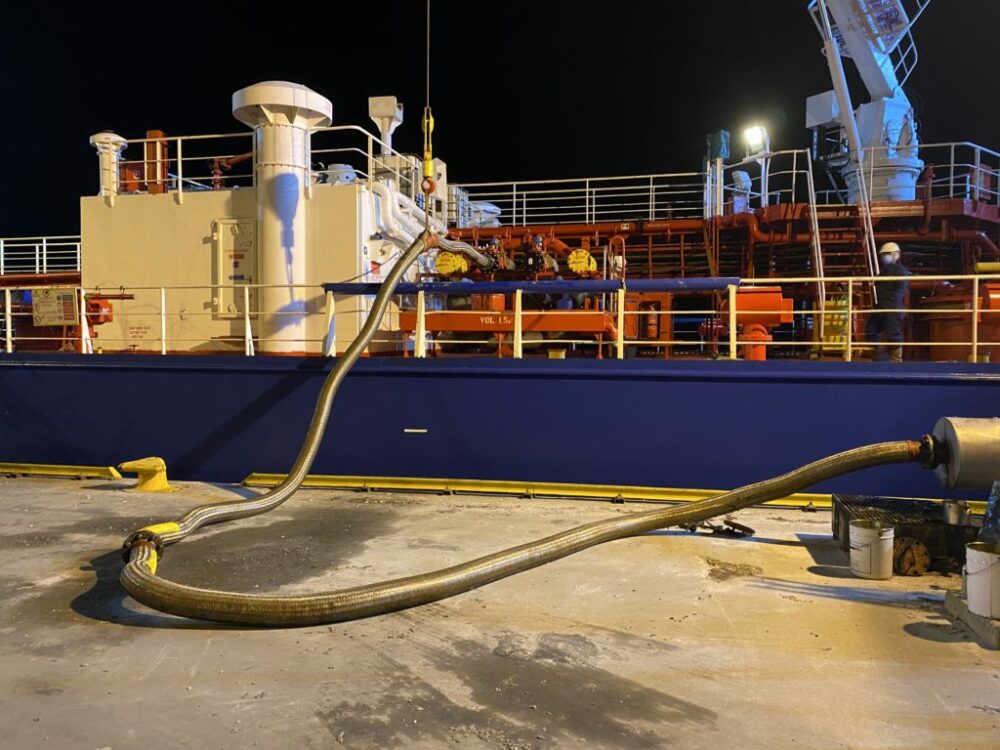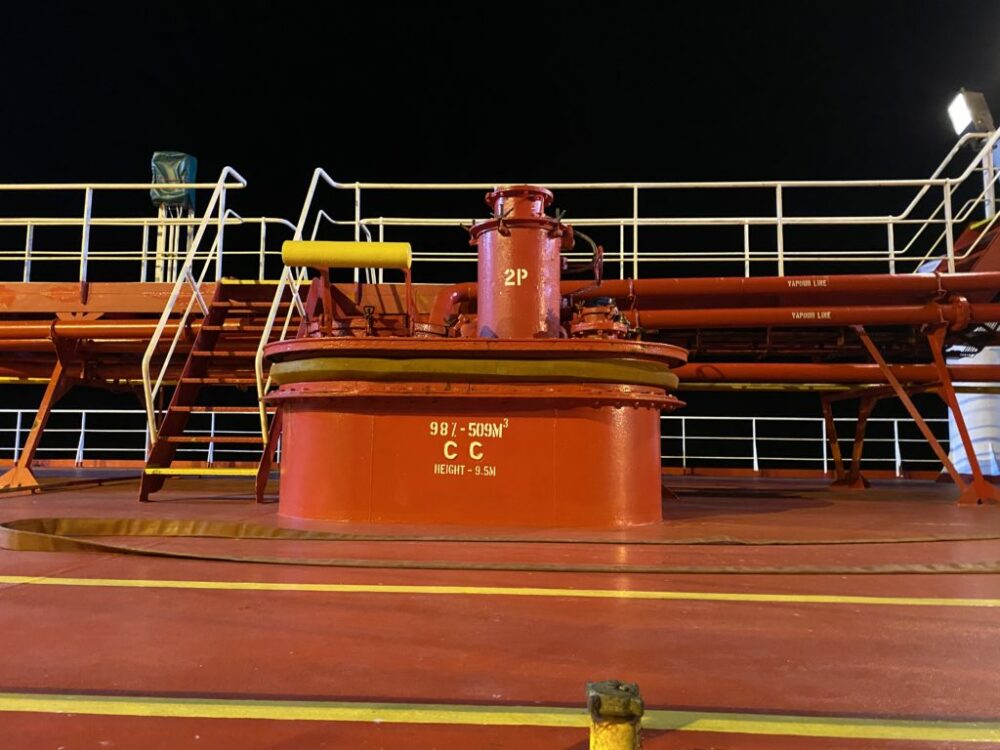Asphalt and bitumen tankers are specialized vessels designed for the transport of liquefied asphalt or bitumen at temperatures ranging from 110°C to 260°C. These tankers are equipped with independent tanks and high-powered heating systems to maintain the required cargo temperature throughout long voyages.

Key Features of Asphalt/Bitumen Tankers
Tank Size and Capacity
Asphalt/Bitumen tankers are typically smaller vessels with deadweights between 5,000 to 12,000 tons, although larger ships, such as the Asphalt Splendor (deadweight of 37,000 tons), also exist. Asphalt/bitumen tankers often feature independent Type C pressure vessels, which allow the cargo tanks to expand at high temperatures without affecting the ship’s hull.

Heating Systems
To maintain the high viscosity of bitumen, tankers utilize thermal oil heating systems. These systems circulate thermal oil heated to 250°C via heavy fuel oil boilers. Each tanker has multiple boilers to ensure uninterrupted heating, even during long voyages. The oil is pumped through heating coils, located both at the tank bottom and in vertical towers within the tanks, to maintain cargo fluidity.
Cargo Tanks and Construction
The cargo tanks on bitumen tankers are generally split into two blocks (fore and aft) with four tanks in each block. Tanks are insulated to minimize heat loss, while tower coils in the center of the tank maintain even heat distribution. The tanks are designed without internal structures to prevent the cargo from sticking to walls. This reduces the need for frequent cleaning, which is typically only performed during dry-docking every five years.

Independent Tanks
Bitumen tankers are often equipped with independent tanks, which do not form part of the ship’s hull. These tanks, classified as Type A, B, or C, are supported by wooden pads and allow for expansion due to high temperatures. Mineral or stone wool insulation fills the void between the tank and hull, preventing heat transfer to the ship’s structure.
Bitumen Transport: Regions and Methods
Bitumen is primarily transported from oil refineries to terminals in North and South America, Europe, Africa, Asia, and Australia. Specialized terminals are equipped with insulated pipelines, bitumen pumps, and heated shore tanks to manage the high-temperature cargo. In regions without bitumen terminals, bitumen can be stored and transported in tank containers with capacities of up to 20 tons.
Safety and Maintenance
As bitumen transport involves handling extremely hot materials, rigorous safety protocols are in place. Tanks must be gas-free before dry-docking or inspections, and crews follow strict guidelines to prevent leaks or heat loss. The heating coils, pumps, and insulation are inspected regularly to ensure operational integrity.
Challenges in Bitumen Transport
Cooling and Viscosity Management
If the cargo cools down, the viscosity of bitumen increases rapidly, which can obstruct unloading. The typical cooling rate is 1°C every 4 hours, which necessitates constant heating during voyages, especially in cold climates. Without proper temperature control, Remaining On Board (ROB) quantities can be significant, as bitumen tends to stick to the walls of the tanks.
Terminal Operations
Specialized terminals are designed to accommodate the high heat and viscosity of bitumen. Bitumen pumps and insulated pipelines ensure that the cargo is transferred without cooling. Remote unloading systems and automated monitoring minimize human exposure to extreme temperatures during cargo operations.
Leading Asphalt/Bitumen Tanker Operators
- Tarbit Shipping AB: Operating since 1947, Tarbit Shipping manages a fleet of 15 asphalt/bitumen carriers. Notable vessels include the MT Bit Hero and MT Bitland.
- ABC Maritime A.G.: This Swiss-based company operates MT San Bacco and MT San Biagio.
- Vroon B.V.: Based in the Netherlands, Vroon operates 12 asphalt/bitumen tankers, including MT Iver Ability and MT Iver Brilliant.
- Desgagnés: A Canadian company that operates a dual-fuel bitumen tanker, the MT Damia Desgagnés.
Environmental Considerations
Transporting bitumen at high temperatures leads to increased fuel consumption and emissions from the boilers. Operators are exploring dual-fuel technologies and improved insulation to reduce the environmental footprint of bitumen tankers.
Conclusion
Asphalt/bitumen tankers play a crucial role in the global transportation of high-viscosity materials. With their advanced heating systems, independent tanks, and specialized design, they ensure that bitumen is delivered safely and efficiently to regions worldwide. To maintain their operational efficiency, regular maintenance, and rigorous safety protocols are essential.
Key Takeaways:
- Asphalt/bitumen tankers carry liquefied bitumen at high temperatures.
- These vessels feature independent tanks and powerful heating systems to maintain cargo temperature.
- Major operators include Tarbit Shipping AB, Vroon B.V., and ABC Maritime A.G..
What is an asphalt/bitumen tanker vessel?

An asphalt/bitumen tanker vessel is a specialized tanker designed for the carriage of liquified asphalt or bitumen at temperatures up to 250-260°C. This type of tanker is equipped with an independent tank and a powerful cargo heating system.
How are asphalt and bitumen transported?
Asphalt and bitumen are mainly supplied to various regions by asphalt-bitumen tankers, which are unloaded at special terminals equipped with a system of bitumen pumps insulated pipelines, and shore tanks with heating. Bitumen can also be transported in special bitumen containers or tank containers with a capacity of up to 20 tons or unloaded into bitumen tankers organized right on the quay wall.
What is an independent tank in a ship?

Independent tanks are self-supporting tanks that do not form a part of the ship hull and are not essential to the hull strength. They are widely used on gas carriers and lately on asphalt/bitumen tankers.
What is the cargo heating system used for asphalt/bitumen tankers?
The heating medium used for cargo heating on asphalt/bitumen tankers is thermal oil at a maximum temperature of 250C. Thermal oil is circulated from boilers fired by heavy fuel oil with a capacity of 1,200,000 kcal/h in the engine room to heating coils located inside the cargo tanks. Each boiler can independently satisfy the entire need for cargo heating.
What is the size of an asphalt/bitumen tanker vessel?

Asphalt/bitumen tankers are usually small vessels with a deadweight of 5,000 tons to 12,000 tons. The length of the world’s largest asphalt/bitumen carrier, Asphalt Splendor, is 175.46 meters and the deadweight is 37,000 tons.
- Types of Gas Carriers as per IGC Code – April 22, 2025
- Wind-Assisted Propulsion Systems (WAPS): A Game Changer for Maritime Decarbonization – February 6, 2025
- 10 Boat Salvage Yards in California – January 25, 2025





Leave a Reply